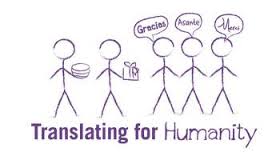The number of people seeking asylum in Europe is increasing by the day. Many migrants are fleeing their home countries that have turned into war zones.
More than 350,000 migrants, the vast majority of them from Syria, Afghanistan, and Eritrea, arrived at the EU’s borders of Greece, Italy, and Spain between January and August 2015 (Source: IOM). They are engaged in long journeys from their homes, fleeing into Turkey, through Macedonia and Serbia, and into Hungary, with most aiming to reach Austria, Germany, or Sweden as their final destination. Germany expects more than 800,000 asylum seekers in 2015. (Source: BBC)
Others are making their way to Europe by crossing the Mediterranean from Morocco, Algeria, Tunisia, and Libya, many escaping from human rights abuses, such as violence and repression, but also from poverty. (Source: Human Rights Watch)
UNHCR together with doctors and social workers from other humanitarian organisations like IRO, ICRC, and Doctors without Borders have been visiting the screening centers in Greece and have found that besides sanitation, food, and healthcare problems, also a shortage of interpreters makes communication about asylum and other relevant issues very difficult. (Source: Human Rights Watch, July 2015)
Although interpreters have helped the police on some Greek islands to speed up the registration process, there is still an enormous shortage of interpreters.
Note, UNHCR has Procedural Standards for Refugee Status Determination under UNHCR’s Mandate that specifically mention access to interpreters:
(Published by UNHCR, September 2005)
UNHCR’s RSD standards provide: “Applicants for RSD should have access to the services of trained and qualified interpreters at all stages of the RSD process” (section 2.5.1). UNHCR’s standards require field offices to make “every effort” to provide female interpreters for female applicants but stop short of committing to doing so in every case.
UNHCR’s policy is to use its own interpreters in RSD interviews. “Applicants should be permitted to use the services of their own interpreter only where no qualified UNHCR interpreter is available” (section 2.5.1). domain value. UNHCR’s policy prohibits legal representatives from acting as interpreters. (section 2.5.2).
With the huge number of people migrating into Europe every day, remote interpreting by video is one possible solution to tackling this shortage of interpreters on site. These professional interpreters could assist the UNHCR and the Immigration Offices in the countries offering asylum, by using video as a mode of communication; thereby, overcoming the need to be in the same location and addressing the on-site shortage of trained interpreters.
Video Interpreting platforms like Translin could help connect organisations in need of interpreting services to a pool of vetted and interested interpreters, covering a broad spectrum of languages, who would be willing and able to help people in need.
For your reference, I would like to highlight a training module of the UNHCR called Interpretation in a refugee context: http://www.unhcr.org/3ae6bd5f0.html
I also found an interesting webinar on addressing language barriers when serving refugee patients http://refugeehealthta.org/webinars/clas/addressing-the-language-access-barrier-when-serving-refugee-patients/
And I would like to share Training courses for Interpreters working with refugees and asylum seekers, of Rights In Exile http://www.refugeelegalaidinformation.org/training-and-resources

























